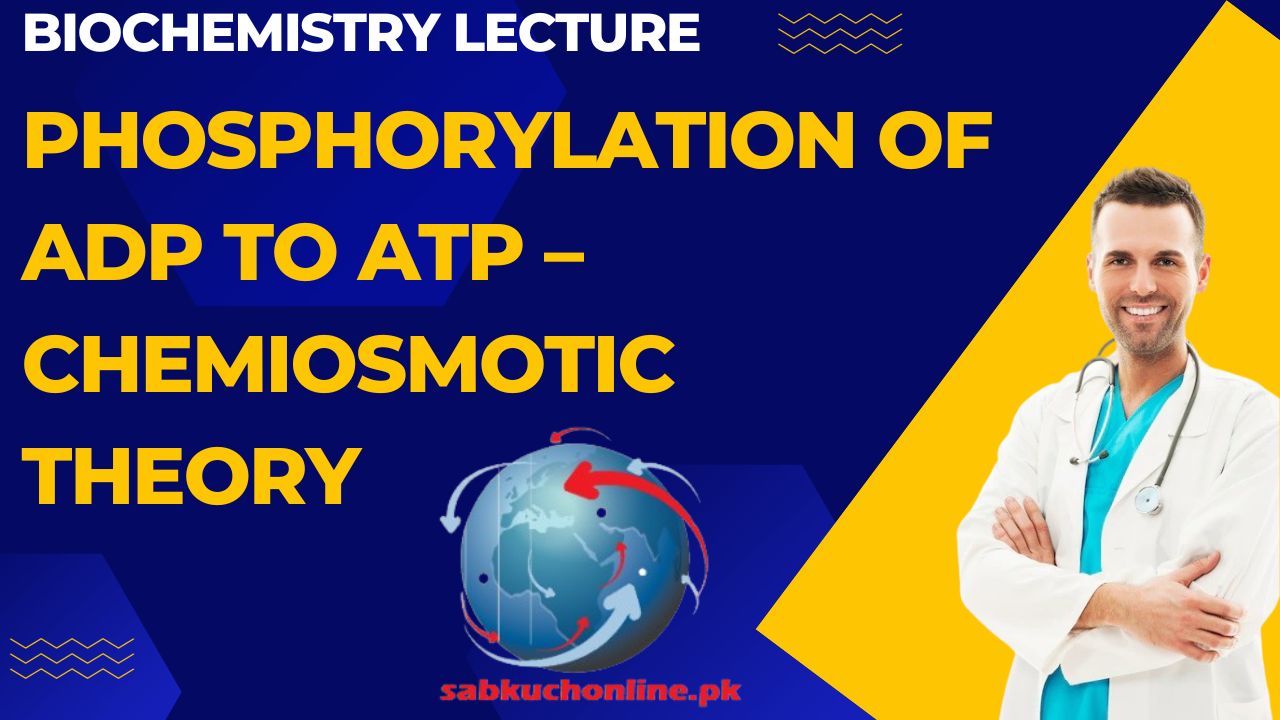The phosphorylation of adenosine diphosphate (ADP) to adenosine triphosphate (ATP) in cellular respiration is a crucial step that occurs through the chemiosmotic theory. This process is a key component of oxidative phosphorylation, taking place in the inner mitochondrial membrane during the electron transport chain (ETC). Here’s an explanation of the phosphorylation of ADP to ATP through the chemiosmotic theory:
1. Electron Transport Chain (ETC):
- The ETC is a series of protein complexes and electron carriers embedded in the inner mitochondrial membrane.
- Electrons are transferred along the ETC through redox reactions, leading to the pumping of protons (H⁺ ions) across the inner mitochondrial membrane.
2. Proton Pumping:
- As electrons move through the ETC, certain protein complexes actively pump protons from the mitochondrial matrix into the intermembrane space.
- This proton pumping creates a concentration gradient, with a higher concentration of protons in the intermembrane space compared to the mitochondrial matrix.
3. Proton Gradient:
- The accumulation of protons in the intermembrane space creates an electrochemical gradient, representing potential energy stored in the form of the proton gradient.
4. ATP Synthase:
- ATP synthase is a protein complex embedded in the inner mitochondrial membrane.
- It consists of a proton channel (Fo) and a catalytic knob (F1).
- The Fo component allows the flow of protons back into the mitochondrial matrix.
5. Chemiosmosis:
- The proton flow through ATP synthase is coupled with the synthesis of ATP from ADP and inorganic phosphate (Pi).
- This coupling of the proton flow and ATP synthesis is known as chemiosmosis.
6. ATP Synthesis:
- Protons move through the Fo component of ATP synthase, causing it to rotate.
- The rotation of Fo induces conformational changes in the catalytic knob (F1).
- The conformational changes in F1 allow the enzyme to catalyze the phosphorylation of ADP to ATP.
7. Release of ATP:
- ATP is released from ATP synthase and becomes available for cellular processes.
- The process of phosphorylating ADP to ATP using the energy released during proton flow is chemically driven and occurs spontaneously.
8. Role of Oxygen:
- The final electron acceptor in the ETC is oxygen, which combines with electrons and protons to form water.
- The involvement of oxygen is crucial for maintaining the electron flow and preventing electron buildup in the ETC.
Significance of Chemiosmotic Theory:
- The chemiosmotic theory, proposed by Peter Mitchell, explains the coupling of electron transport and ATP synthesis through the proton gradient.
- It highlights the importance of the electrochemical gradient in driving ATP production.
- This theory is a fundamental concept in bioenergetics and provides a mechanistic understanding of how the energy from electron transport is converted into the chemical energy stored in ATP.
In summary, the chemiosmotic theory explains how the proton gradient generated during electron transport is utilized to synthesize ATP from ADP and inorganic phosphate. This process is a key step in oxidative phosphorylation, contributing to the cell’s energy production.
